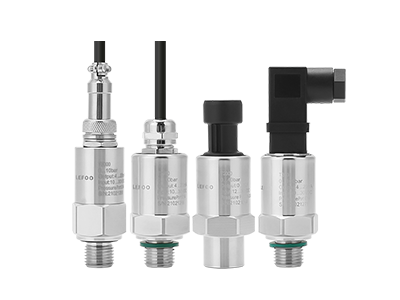Most Popular
The pressure differential transmitter is a typical sensor, which has certain applications in various industries and is also a common sensor. So what is a pressure differential transmitter and what is the working principle of pressure differential transmitter? Here we will introduce you to the working principle of the pressure differential transmitter it.
In Lefoo pressure transmitter manufacturer, Generally the pressure is less than or equal to 50kPa pressure is called micro-pressure; the difference between the two pressures is less than or equal to 50kPa differential pressure is called micro-differential pressure, pressure range of 20kPa or less, with an output called micro-differential pressure transmitter.
(A) micro differential pressure transmitter according to the different measurement sites are divided into.
1. The industrial grade wind pressure micro-differential pressure transmitter, the measurement medium is air.
2. The differential pressure transmitter and the measurement medium is not limited.
(B) the characteristics of the micro differential pressure transmitter
1. It can measure down to 60Pa range, and to ensure that the performance indicators.
2. LCD or LED optional, convenient for users to use on site.
3. Current, voltage output optional, two-wire pressure transmitter can be with HART function.
Differential pressure transmitter is generally divided into multiple ranges, common range code 2 to 9, where range 2 represents micro differential pressure 1.6KPa; other range 3 represents 0 to 7KPa, range 4 represents 40KPa, range 5 represents 180KPa, and so on; because the range of pressure differential transmitters and circuit boards are more difficult to achieve, so it is separated out.
The pressure differential transmitter measured medium of the two pressures into the high and low pressure chamber, acting on the δ element (i.e., sensitive element) on both sides of the isolation diaphragm, through the isolation sheet and the filling fluid within the element transmitted to both sides of the measurement diaphragm. The measuring diaphragm and the electrodes on the insulating sheet on both sides each form a capacitor.
When the pressure on both sides is not the same, resulting in the displacement of the measuring diaphragm, the displacement and pressure difference is proportional, so the capacitance on both sides is not equal, through the oscillation and demodulation link, converted into a signal proportional to the pressure. The working principle of pressure transmitter and absolute pressure transmitter is the same as pressure differential transmitter, the difference is that the low pressure chamber pressure is atmospheric pressure or vacuum.
The a/d converter converts the demodulator current into a digital signal, the value of which is used by the microprocessor to determine the input pressure value. The microprocessor controls the operation of the transmitter.
In addition, it performs sensor linearization, can reset the measurement range, engineering unit conversion, damping, open square, sensor trimming and other operations, as well as diagnostics and digital communication.
More Related Products

 English
English  français
français  Deutsch
Deutsch  Español
Español  italiano
italiano  русский
русский  português
português  العربية
العربية  Türkçe
Türkçe  Zulu
Zulu 